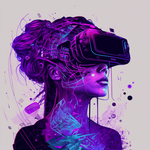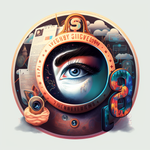Streetwear has always been about making a statement, pushing boundaries, and defying conventions. In recent years, we've seen a shift from large, established brands dominating the market to independent creators making their mark on the industry. One driving force behind this transformation is the rise of web3 technologies, which are empowering independent designers and artists like never before. In this blog post, we'll explore how web3 is leveling the playing field, enabling these creators to reach a global audience, and fostering collaboration within the streetwear community.
Web3 and Decentralization: A Perfect Match for Streetwear
Web3, often referred to as the decentralized web, is a new generation of internet technologies built on blockchain and decentralized protocols. These technologies give independent streetwear designers the tools to bypass traditional gatekeepers, decentralize the fashion industry, and democratize access to a global market. Here's how:
- Decentralized Marketplaces: Platforms like OpenSea, Rarible, and Foundation enable designers to sell their streetwear items, both physical and digital, directly to consumers without middlemen. This allows artists to retain a higher percentage of profits, while offering buyers unique, limited edition pieces. Examples of designers thriving in these marketplaces include Jacob & Co., who auctioned off a limited-edition watch collection, and RTFKT Studios, which sold virtual sneakers for thousands of dollars and was later acquired by Nike to push innovation forward in web3 as a standalone brand within Nike.
- Tokenization: By tokenizing their designs, creators can sell digital ownership of their physical or virtual streetwear items as NFTs (non-fungible tokens). This process not only adds a layer of exclusivity to their products but also enables secondary market trading and royalties for the artists. For instance, an independent designer could tokenize their limited-edition jacket, allowing buyers to own and trade the digital version while retaining the physical item. This model was successfully employed by the streetwear brand Overpriced, which sold NFT-linked hoodies.
- Smart Contracts: These programmable agreements on blockchain platforms, such as Ethereum, automate transactions and remove intermediaries. Smart contracts can be used for various purposes, including royalties for creators, limited edition drops, and collaborative design processes. An example is the new platform launching from Jeff Staple and Stapleverse called SAPIENZ, which will allow brands and creators to interact with each other in collaborative co-creation.
The Power of Community and Collaboration
Web3 technologies foster collaboration within the streetwear community by connecting creators, fans, and enthusiasts from around the world. Decentralized autonomous organizations (DAOs) are a prime example of this collaborative spirit. DAOs are member-owned and -operated entities on the blockchain, where members can vote on proposals, pool resources, and collaborate on projects.
Independent streetwear creators can form or join DAOs to collectively fund, design, and produce limited edition collections, tapping into the power of the community. This collaborative approach enables smaller designers to compete with established brands and capitalize on the creative energy of their supporters. An example is the Red DAO, a DAO that focuses on the intersection of fashion and web3, collecting digital items from designers that they believe will go up and value and fostering collective decision-making amongst their constituents.
Tribute Labs, which has supported Red DAO, also worked with digital sneaker brand RTFKT to create a metaverse-focused DAO called Neon DAO. Neon DAO’s mission is to purchase Metaverse items, such as virtual land or avatar fashion pieces — including virtual sneakers and clothing such as items for RTFKT's CloneX - Takashi Murakami project.
DAOs also have the ability to shift more power into the hands of creators by making them part of the ownership groups of their communities and giving them direct access to their audiences to help them co-design their next set of releases. My giving them access to more direct feedback cycles they can more quickly iterate in time with the market and provide customers with a more concierge and premium experience when it comes to consuming products. Digitalax, for example, hosts eight to 10 hours of weekly calls with its members, where they teach each other how to create fashion pieces for the metaverse and share other skills in 3D design and gaming.
Web3 is revolutionizing the way streetwear designers and artists share their creations, engage with fans, and grow their businesses. As the technology matures and adoption continues to rise, we can expect to see even more innovative ways for independent creators to thrive in the world of streetwear.
The democratization of streetwear design is a testament to the potential of web3 technologies to disrupt traditional industries and empower individuals. As independent creators harness the power of decentralization, collaboration, and tokenization, they're not only shaping the future of streetwear but also challenging the status quo of the fashion industry as a whole.
Embracing the Web3 Movement in Streetwear
As we witness the growing influence of web3 technologies in the streetwear scene, it's crucial for independent designers, artists, and fashion enthusiasts to embrace these new possibilities. By leveraging decentralized marketplaces, tokenization, and smart contracts, creators can expand their reach, create unique experiences for their customers, and foster a more inclusive and collaborative fashion ecosystem.
Moreover, the rise of DAOs offers an unprecedented opportunity for independent creators to join forces and challenge the dominance of large, established brands. By pooling resources and tapping into the collective creativity of the community, streetwear designers can bring forth cutting-edge, limited edition collections that reflect the true spirit of the movement.
In conclusion, web3 technologies are fundamentally altering the landscape of the streetwear industry. As we continue to witness the democratization of streetwear design, it's clear that web3's impact will be felt for years to come. By embracing these new technologies and fostering a spirit of collaboration and innovation, independent creators have the potential to redefine the future of fashion and bring about a new era of streetwear culture.






Comments